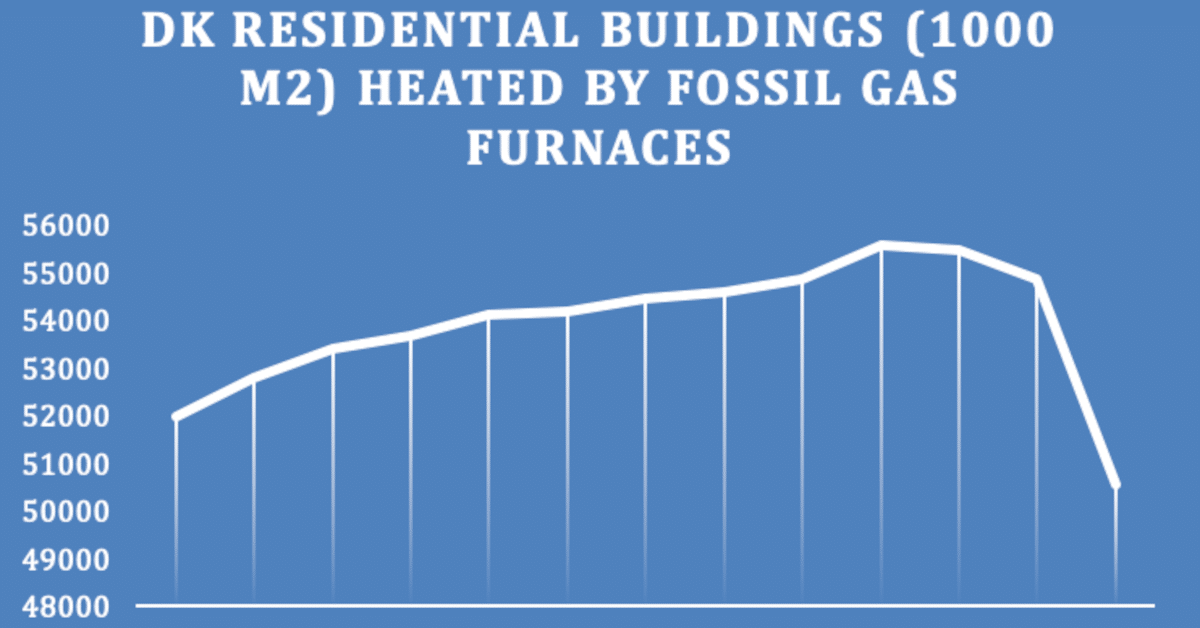Finally the Danish residential heating system is turning away from gas. The Carrot and stick method to achieve an historic shift in gas-heating in Denmark is a good example of practice to be incorporated in the revised NECP.
– Carrot: In 2020 Denmark implemented subsidies to support about 10-15% of the cost of replacing private gas-furnaces with heat pumps or district heating.
– Stick: In 2020 parliament agreed in principle to introduce uniform CO2-tax.
– The two policies combined made very clear to house-owners that the future of residential heating is heat pumps and district heating. Heat pumps and district heating were already recognised as cheaper heating options than gas, but in the short-term Danish homeowners considered it too expensive and bothersome to replace their existing gas-furnaces.

In 2020 Denmark finally reversed the upward curve on heating residential buildings where increasing numbers of fossil gas furnaces were increasing year after year. This trend has now changed as in October 2020 the parliament agreed to implement subsidies to help transition residential housing to district heating or heat pumps. The novelty was that the subsidies were available not only for houses with oil-furnaces, but also for gas-furnaces.
The historic shift from always increasing gas furnaces to finally decreasing gas furnaces began in 2020, but has accelerated with the 2022 energy crisis. Data for 2023 will most likely show an even greater decline in gas furnace heated residential buildings.
Oil furnaces have been on a steady decline for the past decade, in which the residential area heated with oil has been halved. New housing and housing transitioning from fossil furnaces are shifting towards district heating and heat pumps.
Undoubtedly, the government subsidies supporting gas-furnace-owners to change to heat pumps or district heating was instrumental in achieving the shift.
However, probably equally important for house owners long term decisions is the certainty that CO2-taxes are coming. Thus, even if global gas-prices should settle down, Danish consumer gas-prices (and oil) are certain to remain high.

